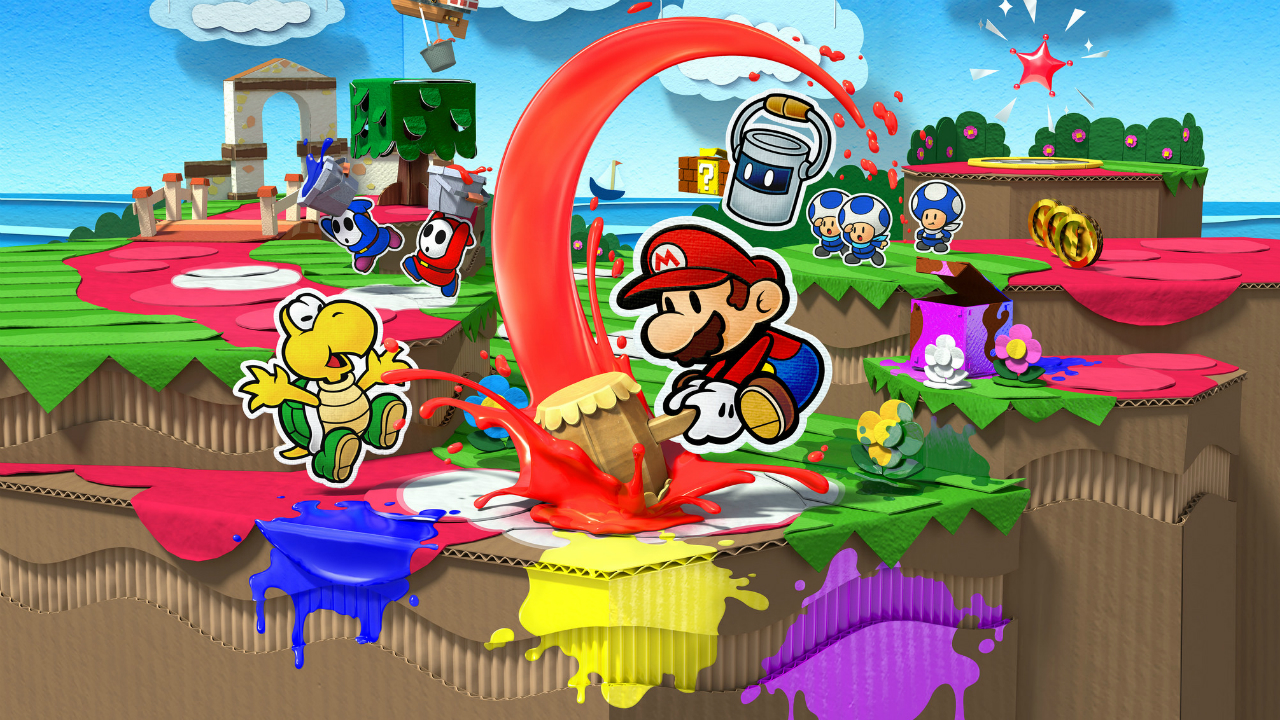GamesRadar+ Verdict
Puzzles aren't exactly inspiring, but good writing and typically first-class presentation amount to a more-than-passable plumb pudding.
Pros
- +
A sumptuous papercraft world to sink into
- +
One of the year’s best scripts
Cons
- -
Cards are an unnecessary addition to battles
- -
Backtracking can occasionally frustrate
Why you can trust GamesRadar+
Ask a Nintendo fan about what makes their games so great and the answer is often “innovation”. And yet, ask a Paper Mario fan what they want from the latest installment, and they’re likely to demand Nintendo JUST MAKES ANOTHER BLOODY THOUSAND YEAR DOOR OH MY GOD STOP TRYING NEW THINGS FOR THE LOVE OF LUIGI. Is Color Splash the title to satisfy those fans once and for all? Uh, no, but it is nonetheless rather delightful, and worthwhile of your time.
The first thing you notice is that it looks darn lovely, perhaps the purest distillation of the original Paper Mario style yet. Characters are crisp, wafer-thin paper, while the environments are chunky, 3D cardboard dioramas populated with origami trees, papercraft green pipes and chequered ribbon bridges. Between Yoshi’s Wooly World, Kirby and the Rainbow Curse, and this, Nintendo have really nailed the arts-and-crafts aesthetic of late.
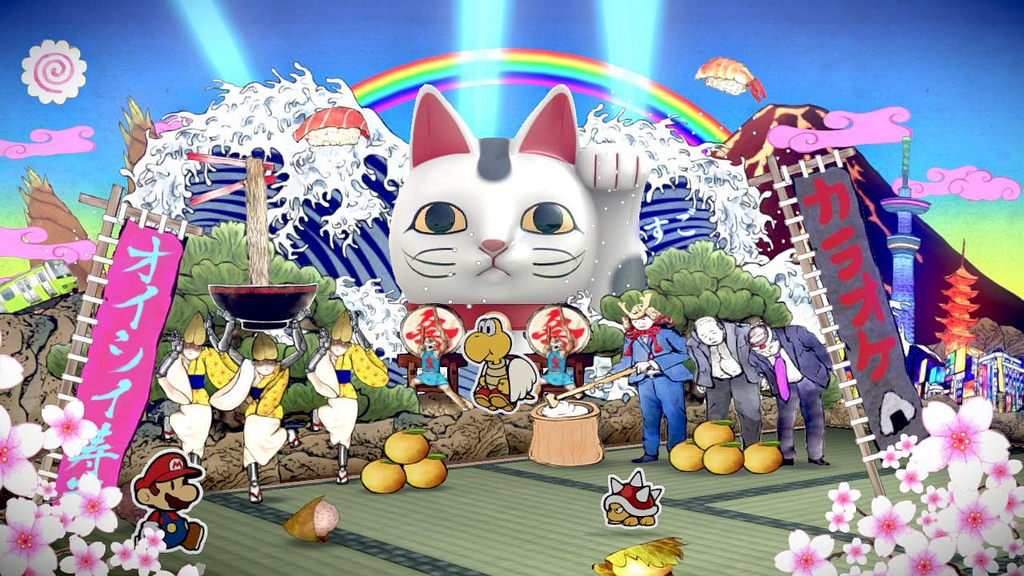
Rounding out the handmade stylings is this title’s central conceit: paint. There’s an abundance of squelchy, luminous colourant here that Mario can use to brighten up the world in places where Bowser’s minions have nefariously drained away the colour. This forms the basis for some simple puzzling, though that often amounts to little more than “paint the thing that’s broken to fix it”. A few clever moments aside, most of the puzzles aren’t particularly taxing, and a mechanic which allows you to cut out the backdrop of scenes to reach inaccessible areas is poorly implemented, only useable when the game arbitrarily decides so. That being said, it’s used sparingly, and there’s another mechanic returning from the previous instalment, that’s more likely to irk fans...
Players of Paper Mario: Sticker Star, will be familiar with the concept of cards (they’re no longer stickers, but they function similarly). During any of the many turn-based battles, Mario must play cards from a deck to make a move. A hammer card, for example, allows him to thwack an enemy, while a Koopa Troopa card summons a temporary turtle comrade. As the game progresses, you’re able to play more cards per turn, allowing for chains of multiple attacks. On top of that, cards can be powered up by paint, with a fully painted card doing the most damage, and naturally, your paint supply is somewhat limited. It adds some nice risk-reward elements, as you try not to waste cards and paint without leaving any enemies standing.
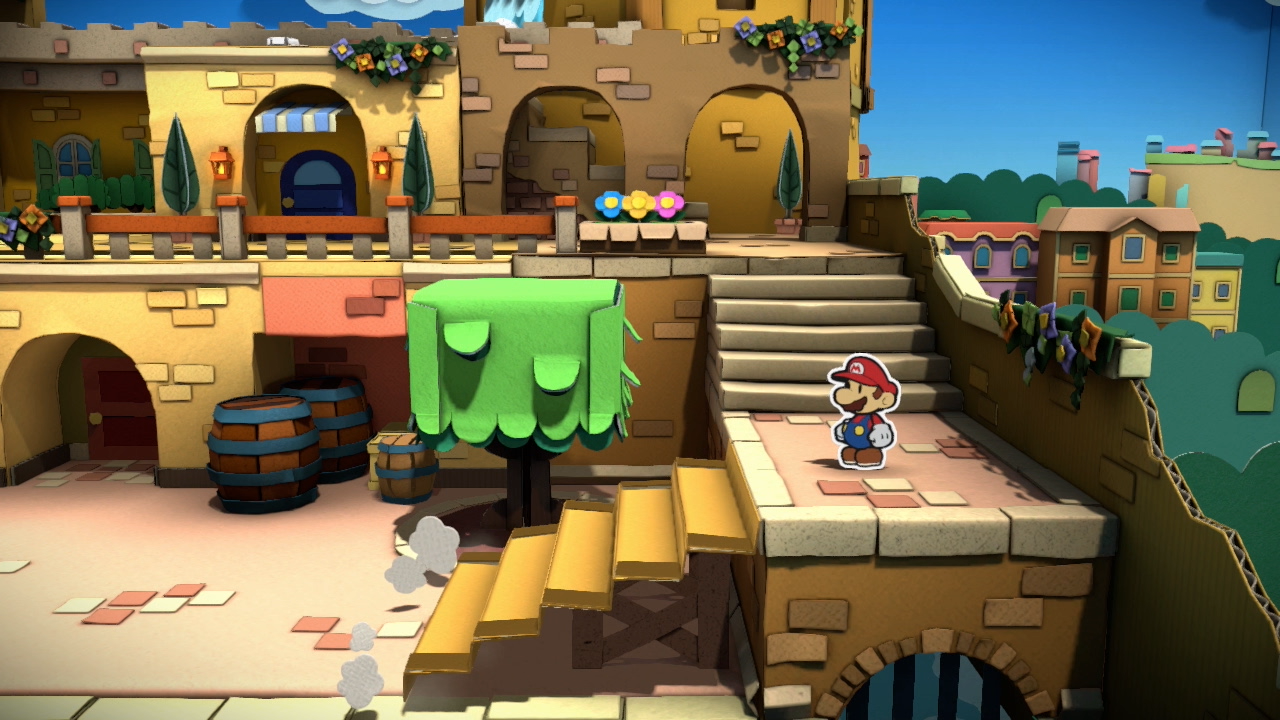
If you think that all sounds a little cumbersome, you’d be right. To attack even the simplest enemy you have to select cards, add some paint, flick the cards from the Gamepad to the TV, and then carry out the moves using timed button presses. It’s not the most elegant system in the world, especially when you have to wade through a hefty stack of cards to find the one you want, and it slows down battles unnecessarily. I often found myself trying to dodge enemies to avoid battle altogether, partly to conserve cards but also because at times they began to feel plodding and choresome. It’s far from awful, but there’s too much needless baggage on the strong core battle system that the Paper Mario and Mario & Luigi series have employed for years.
A highlight of battles are the returning Thing cards, which plonk real-world objects into the papery realm. Seeing detailed HD lemon wedges, for example, being squeezed over some paper-thin Bowser minions is marvelously odd and thoroughly satisfying. That being said, they’re also sometimes necessary to beat certain bosses, and if you don’t have the required cards to hand, then a bit of backtracking is in order. A vendor of Thing cards avoids Sticker Star levels of tedious backtracking, but it remains an ill-thought out mechanic.
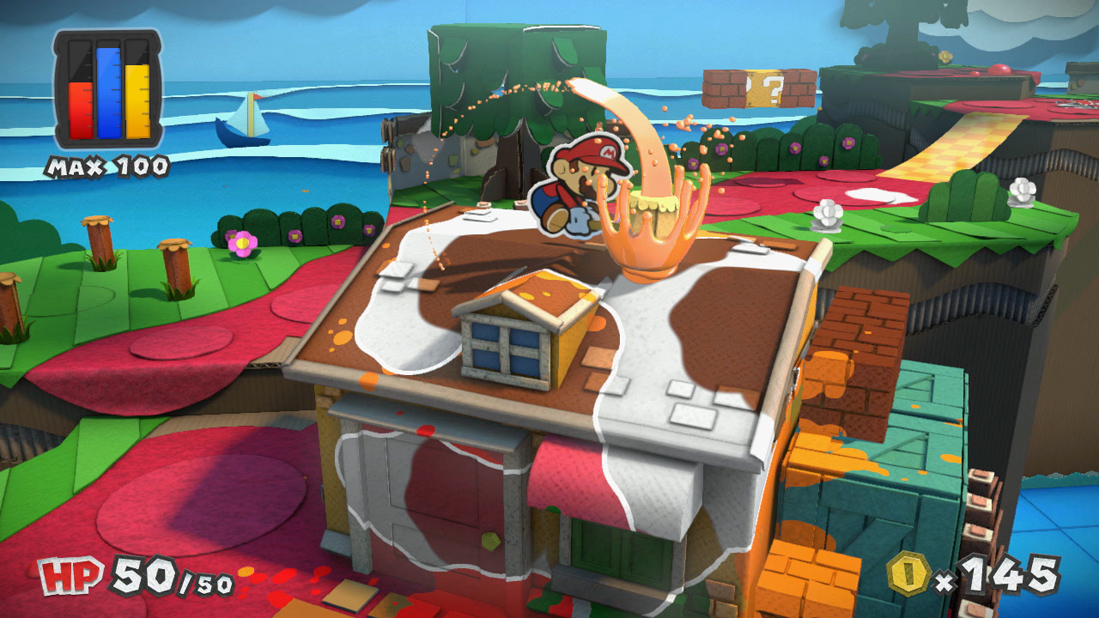
Backtracking is a recurring theme, in fact, though it’s not as problematic as that might seem. Most levels feature multiple end-points, much like the multi-star levels of Super Mario 64, albeit on a smaller scale. This sometimes means revisiting an already completed level with new knowledge, skills or allies in tow. The semi-linear nature of the levels means that returning to old courses can require a bit of retreading familiar ground, but nothing too arduous.
I’m aware that at this point, this review sounds overwhelmingly negative, but in truth the backtracking, imperfect battling and minor Thing card irritants don’t ruin the overall experience. Besides, it’s impossible to hold a grudge against a game that’s as consistently endearing as this. The writing work in particular is stellar, and while the Paper Mario games have always been well-scripted and humorous, this entry strikes a slightly different tone. Its jokes feel, for Nintendo, atypically modern and no doubt many of the funniest lines will be distributed around social media in the weeks after launch. It’s certainly worth trying to avoid them to experience them for yourself in the proper context.
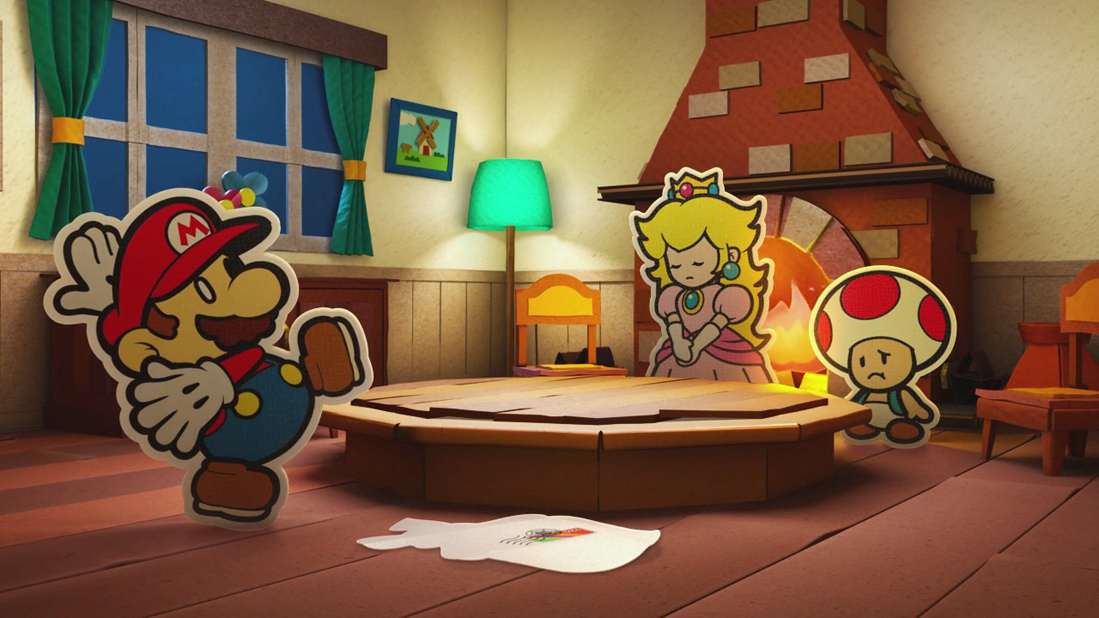
It’s not just the dialogue that’s superb, the entire presentation is so carefully crafted. Bashing innocent Toads with your hammer sees them crumple into squashed blobs, while Shy Guy opponents jeer at you when you take too long to pick an attack, and these are just two examples among hundreds of incidental moments which raise a smile. Even the World Map, so often a dull intermediary, is something to behold: a piece of traditional cartography that’s slowly injected with colour and shiny tape trails as you explore more and more of the world.
They say the devil’s in the detail, but Color Splash proves quite the opposite. In the minutiae it excels, while many of its broader systems hit a little wide of the mark. Despite its flaws, it’s very difficult to dislike, perhaps because every niggling issue is quickly followed by a moment of grin-inducing silliness or awe-inspiring beauty. This might not be the return to classic Paper Mario that its devotees have been awaiting, nor is it a bold reinvention that vindicates Nintendo’s need to innovate. It is, however, one of the most heartwarming games you’ll play this year.
More info
| Genre | Role Playing |
